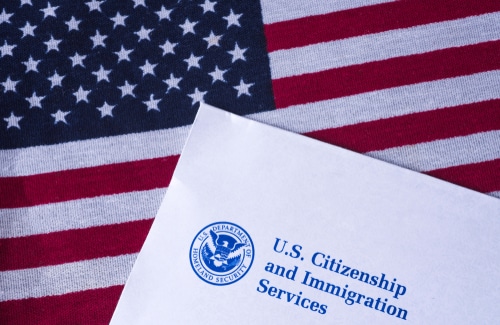Key Highlights
- Deportation refers to the forced removal of a foreign national from a country due to violations of immigration laws or other serious offenses.
- The deportation process includes multiple steps: investigation, detention, court hearings, and removal.
- It can come with significant costs, including government expenses and financial burdens on affected families.
- Legal fees, travel costs, and lost income often add to the stress faced by individuals and their loved ones.
- This guide breaks down what deportation is, how it works, and the real impact it has on people’s lives.
Deportation is a deeply emotional and complex process that impacts thousands of individuals and families every year. In the United States, this process is overseen primarily by the Department of Homeland Security. Deportation typically begins when someone is suspected of violating immigration laws or is seen by the government as a threat to public safety.
While the legal side of deportation may seem procedural, the human side often includes fear, separation, and hardship. For those navigating immigration systems, whether personally or on behalf of a loved one, understanding how deportation works is crucial. It helps people prepare, protect their rights, and seek support.
Understanding Deportation
In the U.S., deportation usually targets undocumented immigrants, visa overstayers, or those convicted of serious crimes. But every case is unique. Sometimes, it begins with something as routine as a traffic stop or ID check, which can unexpectedly escalate into legal proceedings. Under previous administrations, policies around enforcement have shifted drastically, creating greater uncertainty for many immigrants.
Knowing your rights and how the process works can make a world of difference, especially for families trying to stay together.
Legal Framework Governing Deportation
Deportation is governed by U.S. immigration law, enforced mainly by agencies within the Department of Homeland Security (DHS), such as Immigration and Customs Enforcement (ICE). Key legal protections exist, but navigating them without legal help can be extremely difficult.
The U.S. Supreme Court has played a major role in defining what is legal and fair during deportation proceedings. Decisions from the Court have emphasized that non-citizens must be treated with due process, even if they are facing removal.
The Deportation Process Explained
Deportation is not a single event. It is a series of steps. Each one can take a heavy emotional and financial toll. Here’s a closer look at what this process often involves:
Investigation and Identification
It usually starts when ICE or another agency flags someone as being potentially out of status or violating immigration laws. This could happen during record checks, workplace audits, or even based on anonymous tips. People with past criminal convictions, especially for serious offenses, may be fast-tracked for deportation.
But being identified does not automatically mean removal. Many individuals still have legal options.
Detention Before Deportation
Many immigrants are detained while their cases are processed. These detention centers vary in condition, and being held for months, sometimes even longer, can be traumatic. Some individuals may be released on bond, depending on their case and perceived risk.
There are ongoing concerns about the fairness and humanity of the detention system, especially when families are separated or when people are detained despite having no criminal history.
Immigration Court Hearings
Immigration courts operate under the Department of Justice. A judge will examine each case and decide whether someone should be allowed to stay in the U.S. or be removed. These hearings are complex, and unlike criminal courts, the government is not required to provide legal representation to immigrants.
That is why legal support, often from nonprofits or pro bono lawyers, can be life-changing.

Rights and Protections in Deportation Cases
Immigrants facing deportation still have rights. The Fifth Amendment guarantees due process, which includes the right to a hearing and to present a defense. Although the government does not always provide an attorney, individuals can, and should, seek legal help if possible.
Knowing your rights and how to exercise them can influence whether you are allowed to stay, seek asylum, or explore other legal paths.
Deportation Resources for Immigrants
If you or a loved one are facing deportation, you are not alone. Below are some trusted resources that provide legal aid, know-your-rights guides, and direct assistance:
American Immigration Lawyers Association (AILA)
Find qualified immigration attorneys in your area.
https://www.aila.org/
National Immigration Law Center (NILC)
Offers resources on immigrants’ rights and legal updates.
https://www.nilc.org/
Immigrant Legal Resource Center (ILRC)
Provides toolkits, legal guides, and support for immigrants and advocates.
https://www.ilrc.org/
United We Dream
A youth-led network offering resources, deportation defense tools, and emergency contacts.
https://unitedwedream.org/
RAICES (Refugee and Immigrant Center for Education and Legal Services)
Legal services for immigrants and families, including representation in deportation cases.
https://www.raicestexas.org/
Catholic Legal Immigration Network, Inc. (CLINIC)
Nationwide legal immigration services through a faith-based network.
https://cliniclegal.org/
National Immigration Justice Center (NIJC)
Free and low-cost legal services for immigrants, including deportation defense.
https://immigrantjustice.org/
These organizations can help you understand your legal rights and connect you with someone who can advocate on your behalf.
Frequently Asked Questions (FAQs)
What legal options are available to contest deportation?
You may be able to request asylum, cancellation of removal, or voluntary departure. You can also appeal to the Board of Immigration Appeals or higher courts. An immigration lawyer can help determine which route makes the most sense for your situation.
How long does the deportation process take?
It varies widely. Some cases are resolved in months, while others take years, especially if appeals are involved or if immigration courts are overwhelmed with backlogs.

